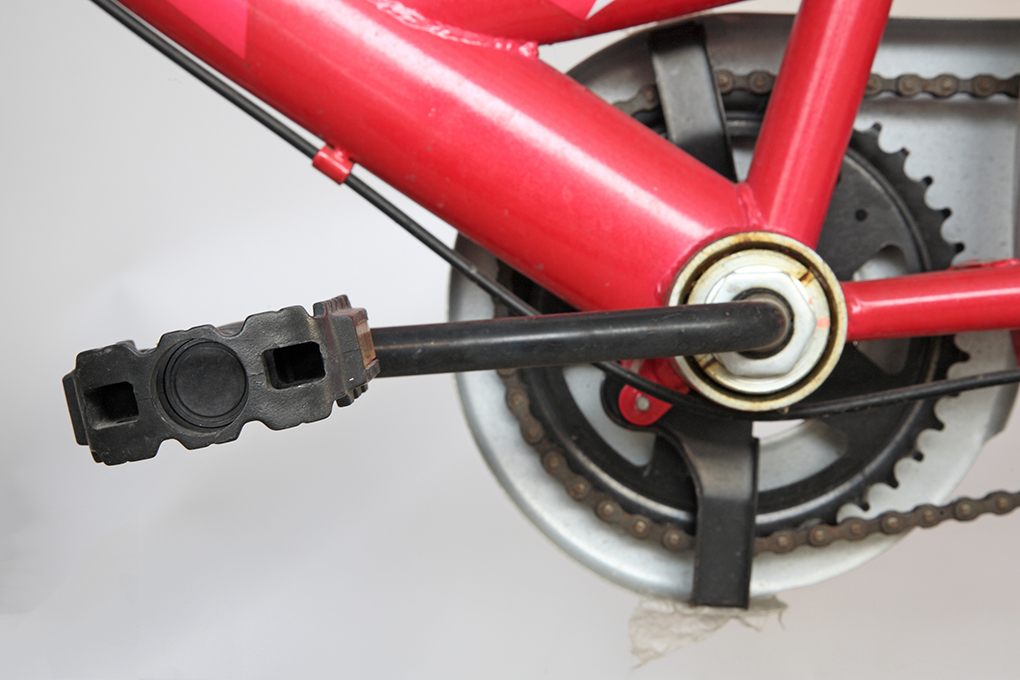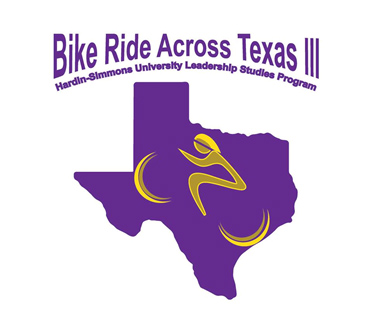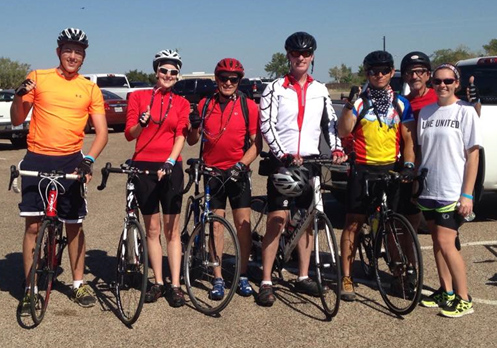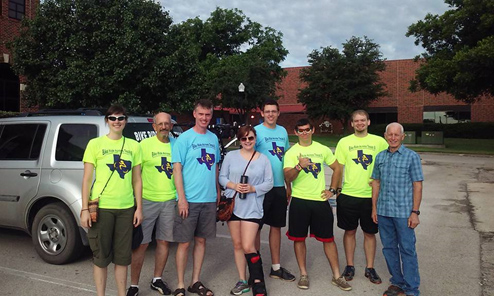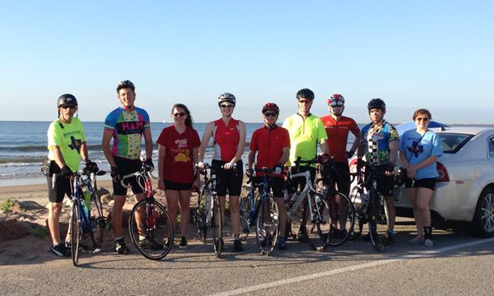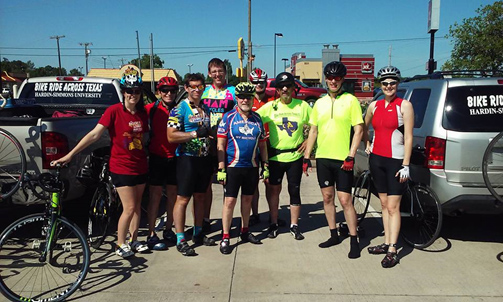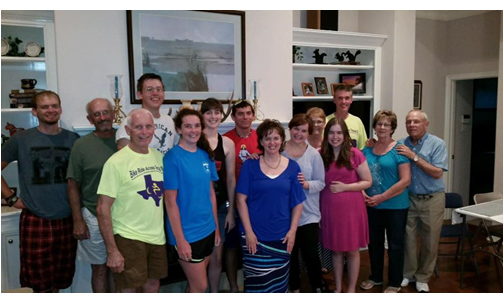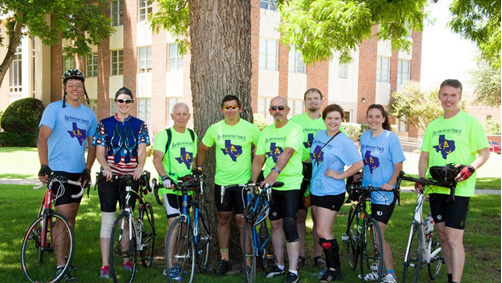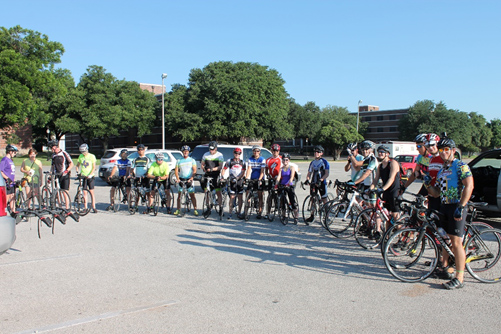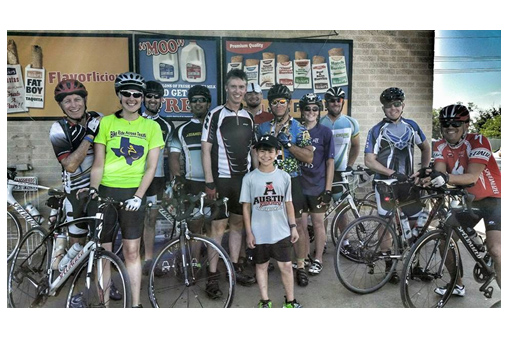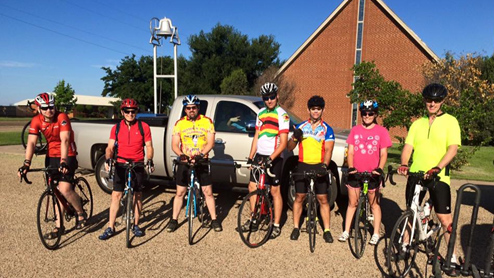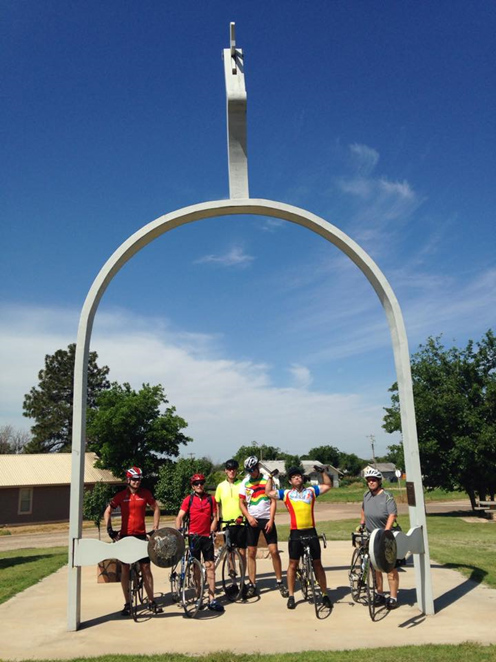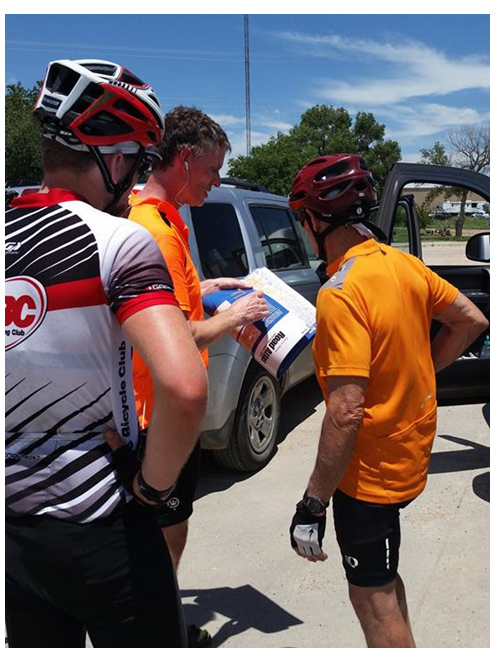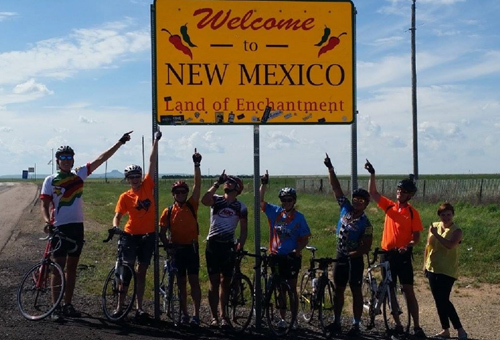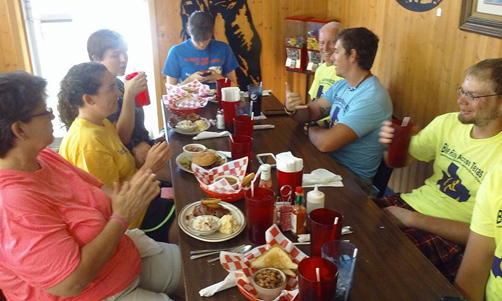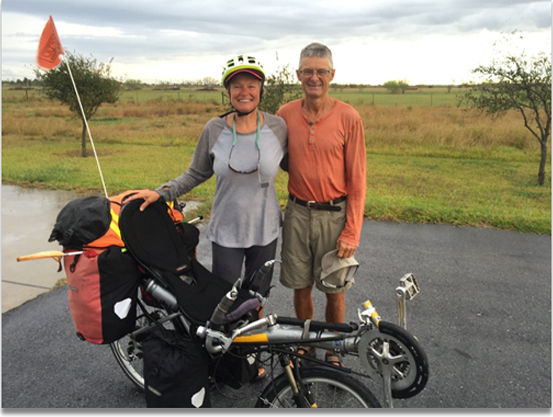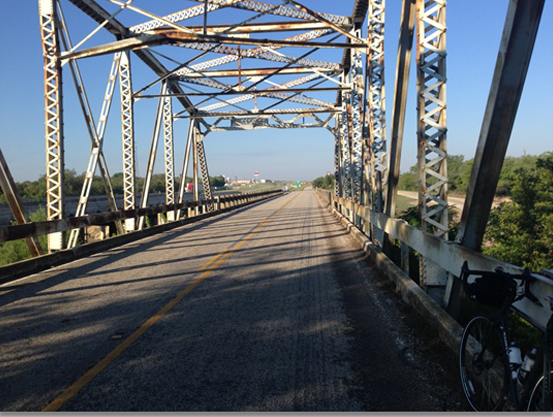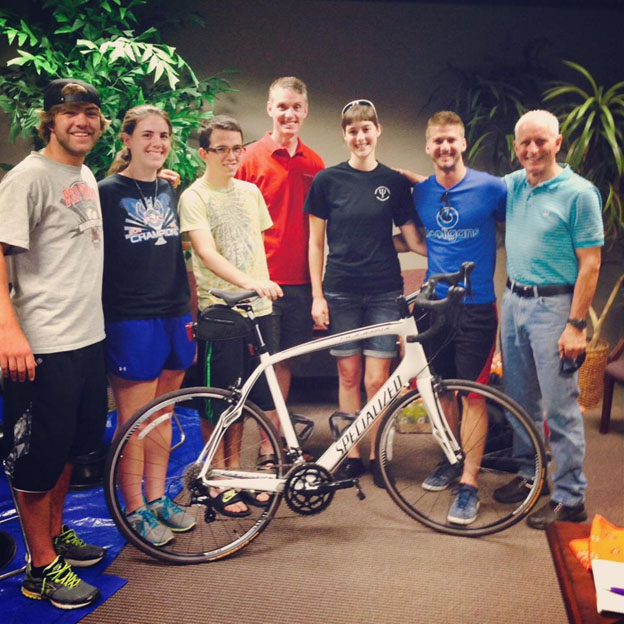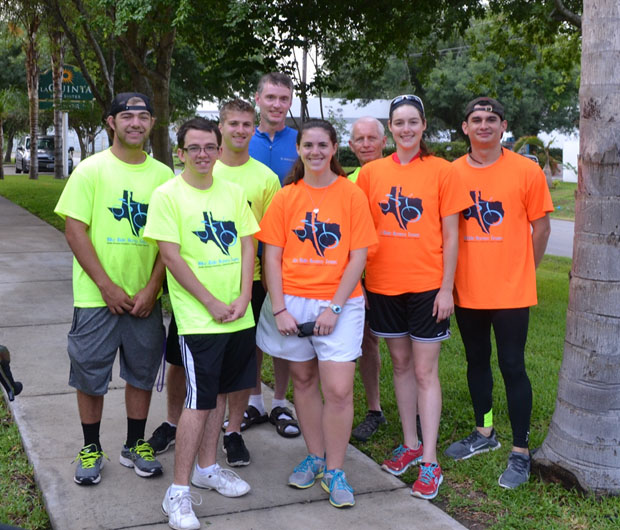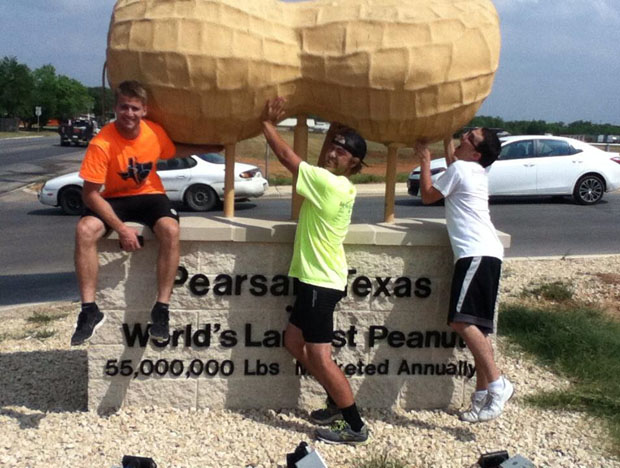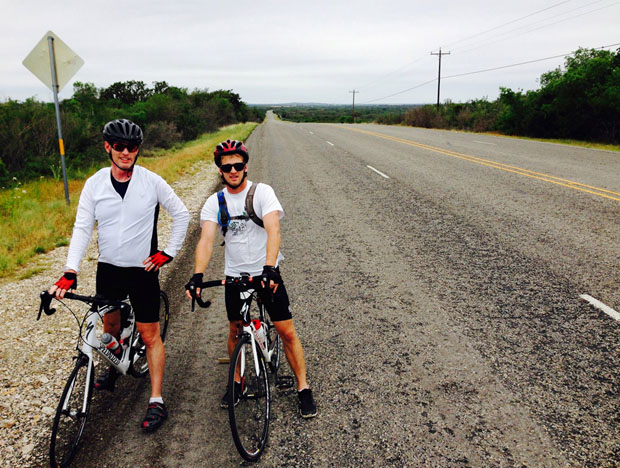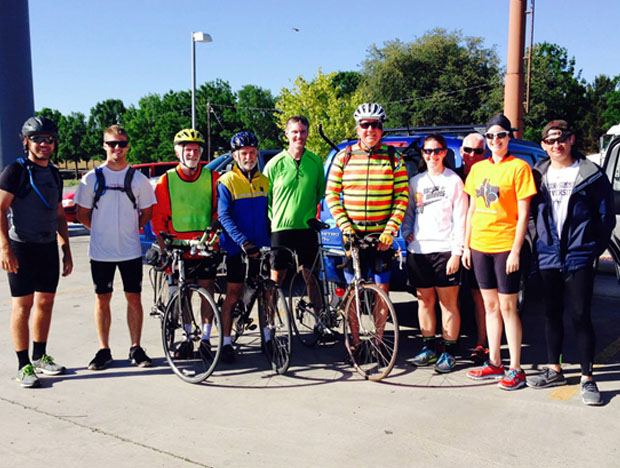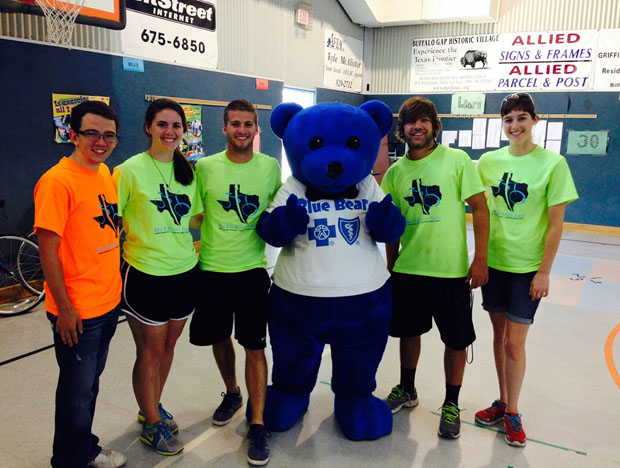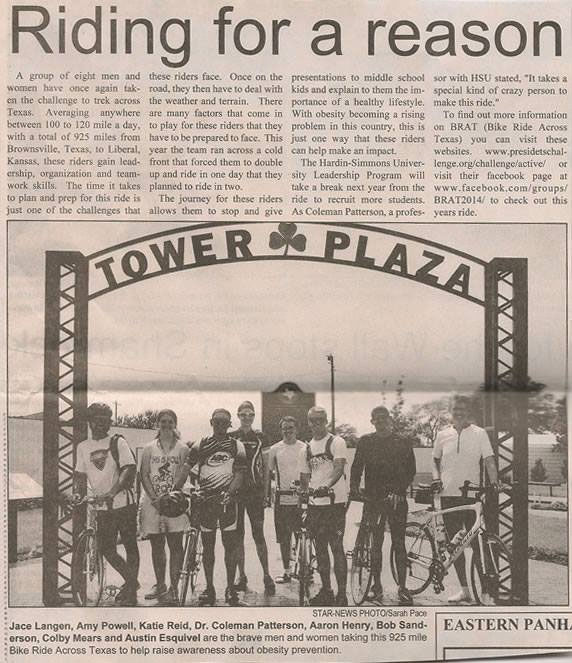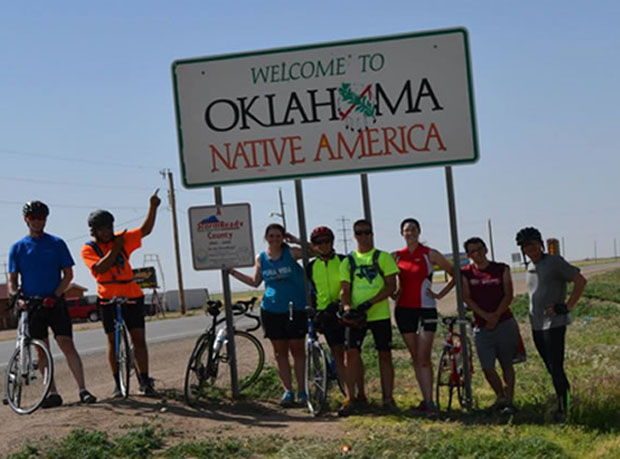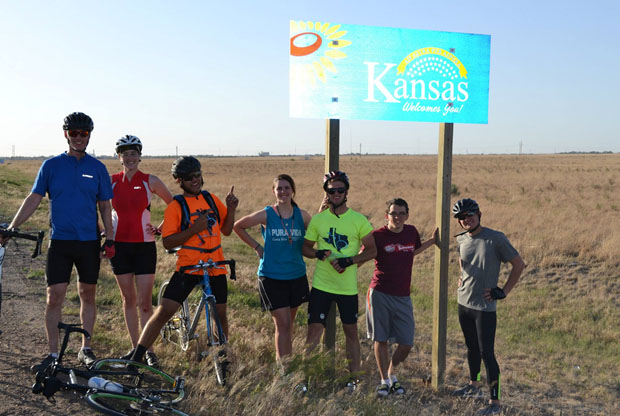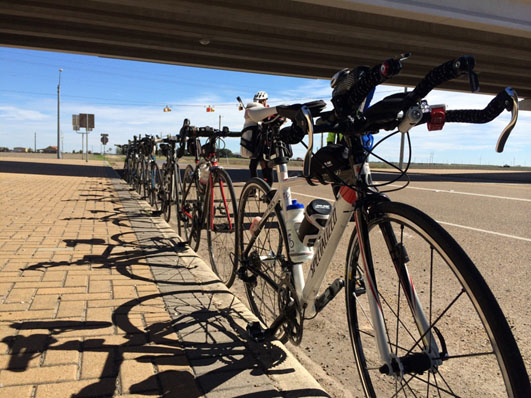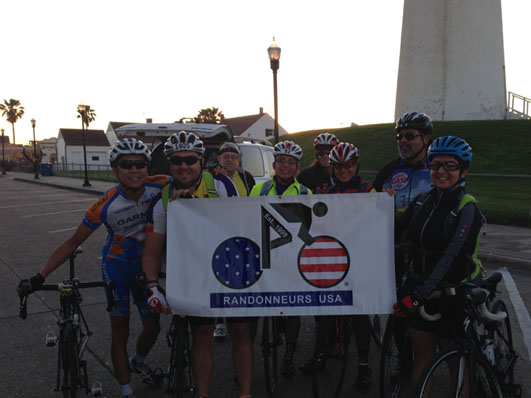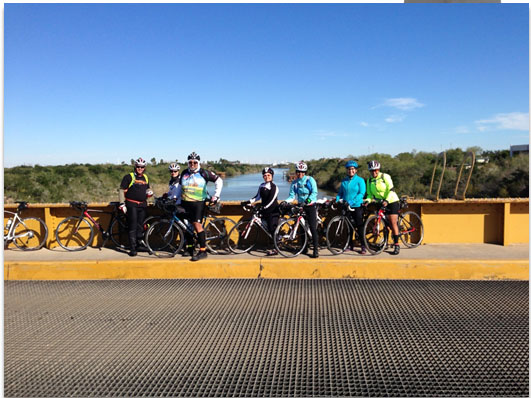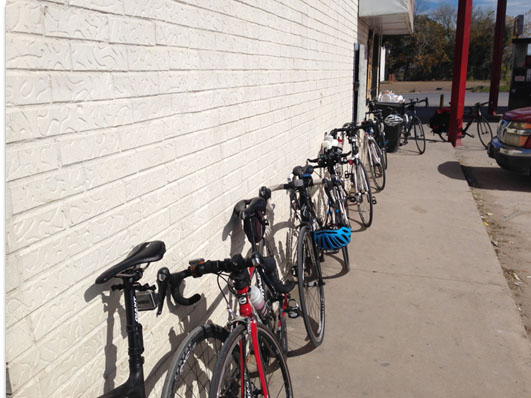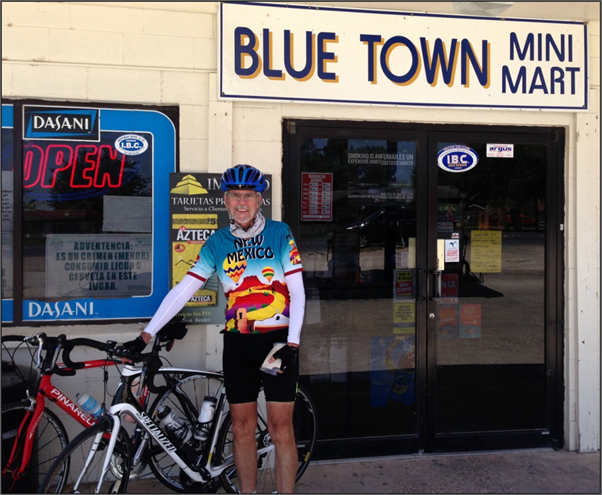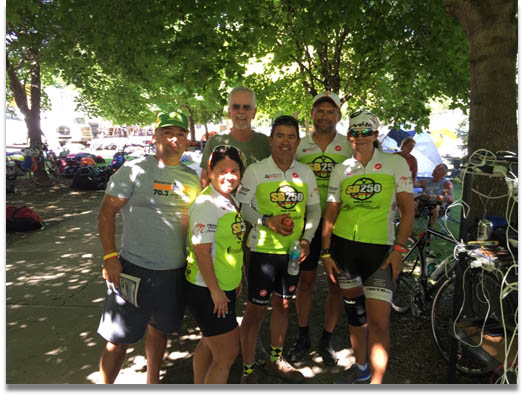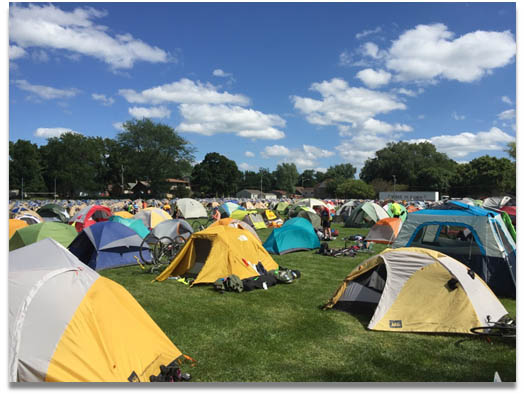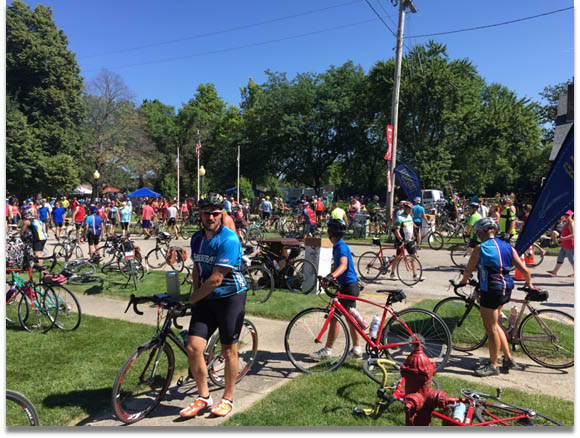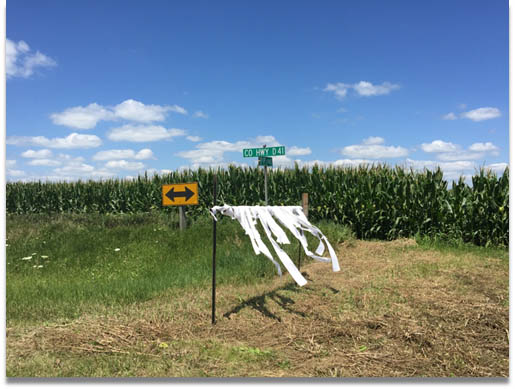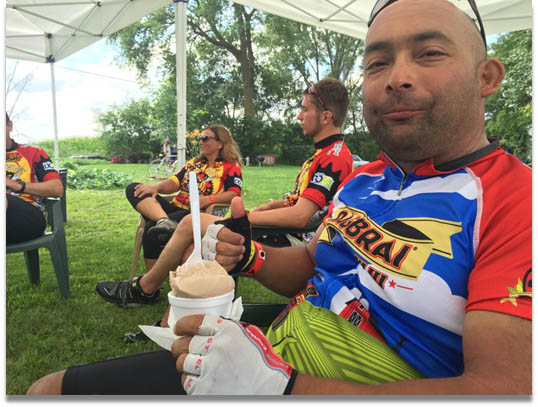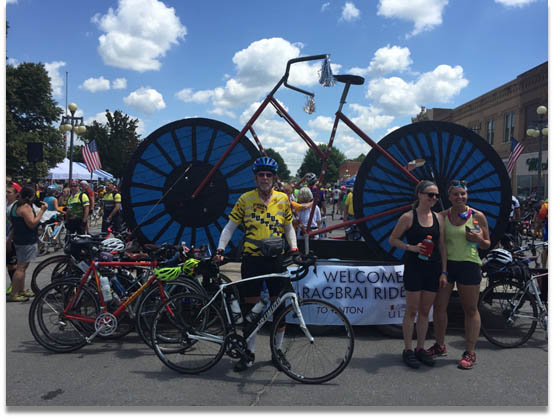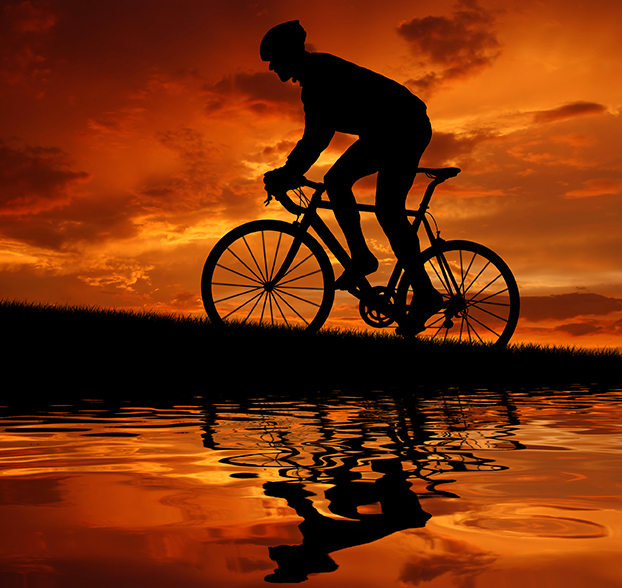On the surface of it, doesn’t the very notion of being in charge of rounding up volunteers for any large-scale event sound like a thankless task? Sure it does.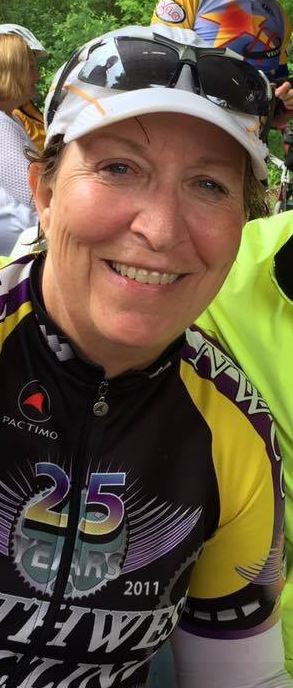
But don’t tell that to Barbara Wu, volunteer coordinator for Houston’s Northwest Cycling Club for 5½ years. Her mission takes her where few dare to go and she loves it!
With five major cycling events every year plus 52 Saturday morning club rides, there’s plenty on her plate. That’s because NWCC is one of the largest and most active cycling clubs in the country. And one of the best – it was named USA Cycling Club of the Year in 2005, 2012, 2013 and 2014.
The next big gig for Barbara is NWCC’s Katy Flatland Century on July 17. Ride options are 32, 42, 55, the metric century 62 and, of course, 100 miles. And as the race name suggests, it’s a level playing field out there on the bald prairie west of Houston – perfect for those tackling their first century ride. Register at www.kfc.bike.
Barbara gave Wheel Brothers some insight into what it’s like to be responsible for assembling the volunteer troops and giving them their marching orders.
How many riders are expected for KFC? How many volunteers do you need to sufficiently staff the ride?
We are anticipating 2,000 to 2,500 riders for the Katy Flatlands Century Ride and we will need around 150 Northwest Cycling Club volunteers to fully staff all of the positions, which include registration, parking, rest stops, corner monitors, SAG and miscellaneous others. In addition to our NWCC volunteers, we enlist the help of two Boy Scout Troops to staff rest stops.
Is the number of riders to the number of volunteers needed a strict ratio, or is more of a need-based number based on a number of variables?
There is not a strict ratio, but rather it is based on a number of factors as determined by the ride director. Some things that play into this equation are the length of the routes, number of corners along the routes, number of rest stops, the time of year and of course the number of anticipated riders. NWCC has developed a very good reputation over the years for putting on some of the best rides in Texas!
Your volunteer positions for the Katy Flatland filled very early. Is that the norm for NWCC?
Actually, it is! All positions are usually filled at least 3-4 weeks before the actual event. Almost always, I will have a waiting list of people wanting to volunteer if someone has to cancel due to a last-minute emergency or work commitment. Many of our volunteers are repeat volunteers who also enjoy giving back.
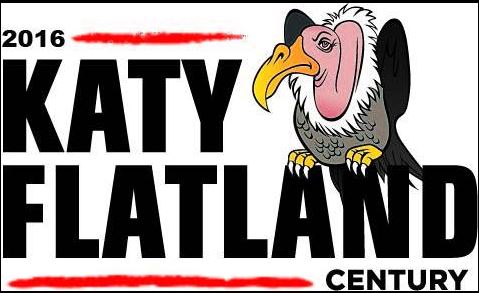
Is buttoning down volunteers this early common for all NWCC events? In your estimation, is it common for most cycling events?
It is common for us. I don’t like surprises and like to have volunteers lined up well ahead of time. It helps when I can give the individual work area coordinators their lists of volunteers on a timely basis, as we all have very busy schedules. It also helps the ride director, who has to make the decision to add additional volunteers if needed.
I can’t really address if it is common for most cycling events, as I have not helped other organizations staff their events. But, from everything that I know, I don’t think it’s common to have the volunteer component completed as early as we do. Then again, other cycling clubs do not have the large membership to pull from that NWCC enjoys.
Also, as a club, we also offer incentives for volunteering for our events, and that really helps.
Is there any downside for completing your volunteer roster early?
Not really. I like to get volunteers early so we can move on to the next event. On rare occasions, members need to cancel at the last minute, but I usually have a backup list of members to help fill in where needed.
What are the most popular volunteer positions? What are the least popular posts, but ones that still need to be filled?
That is a hard one to say! Registration positions for the morning of the ride fill up quickly because we offer the incentive of being able to ride the event free, as do parking volunteers, which is staffed by our junior race team. Corner monitors and rest stops fill quickly because they are so much fun! You get to see everyone, slow riders and fast and can shout out words of encouragement, and often they are our first responders if a rider is in need of assistance! SAG drivers are popular in that you are there to assist riders who may be having a mechanical issue or to offer help to the rider who has overestimated their abilities with the Texas summer heat!
The least popular positions would be the ones that involve helping with food service and setup and loading up equipment and returning it to storage at the end of the day. But often times family members of club members take these positions. They want something to do while waiting for their significant others who are riding!
Some positions preclude the volunteer from riding in the event. Does this make these positions difficult to fill? How do you work around that?
Most of the volunteers on the day of the ride are not able to participate in the ride itself, but it does not make them too hard to fill. Many of our volunteers have a particular favorite ride that they like and they will participate in some and volunteer for others.
We offer club incentives for volunteering for club events, such as the KFC. As a club, we charter a bus to Wichita Falls for the Hotter-N-Hell ride in August and in order to qualify for that trip you must work one event or be one of our Saturday morning ride starters. If a club member works two events, they are eligible to attend a special Volunteer Appreciation weekend. This year we have a new incentive. If a club member volunteers for all five events that NWCC puts on and also volunteers as a Saturday morning ride starter they will receive a “Super Volunteer” jersey at the end of the year.
But often times club members volunteer not for the rewards, but for the reason that someone along the way in their cycling career gave them some encouragement or helped them in some way. This is their way of paying it forward!
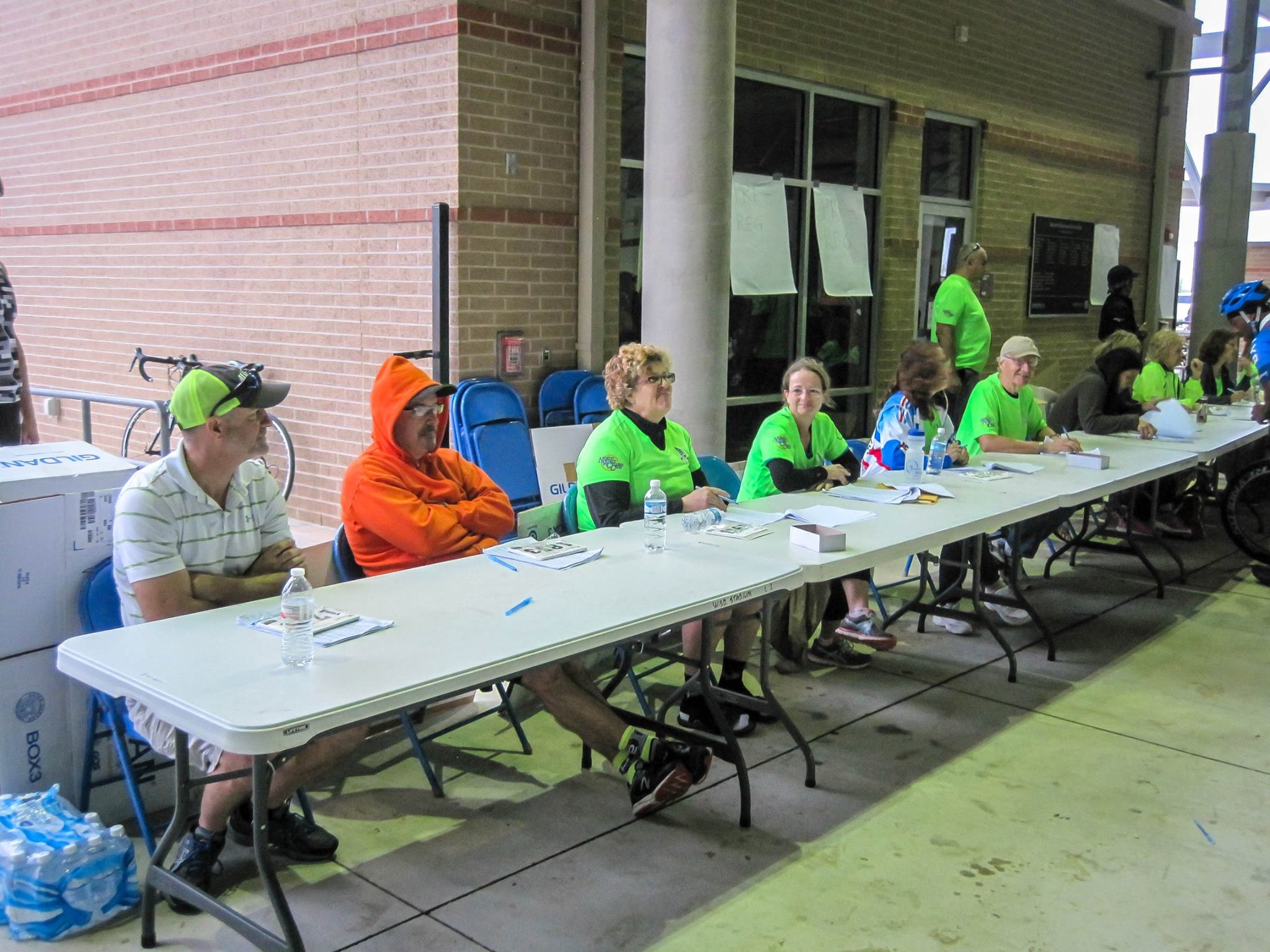
What are some of the communication means you use in reaching out to potential volunteers?
First, I compile a list of volunteers needed for each of our rides and ask for volunteers at our monthly club meeting. This usually takes place 2-3 months before an event. Then, with the help of social media and Facebook, I begin posting the need for volunteers. But the most effective means, I believe, is the face-to-face contact with club members at our Saturday morning rides at Zube Park. This direct contact works because often club members have a hard time making it to our club meetings because of work schedules, living on the other side of town or the ever-changing road construction that take place on Houston highways. Also, our Saturday morning rides are often full of new club members who have not yet been to a club meeting and are not aware of what NWCC has to offer.
NWCC sponsors a number of events during the year. Do you adjust your volunteer methods to suit each race, or does “one size fit all”?
NWCC sponsors five different events throughout the year, plus we need ride starters for our club rides every Saturday of the calendar year (52). I do basically the same thing for each one. There are also a couple events that are considered competitive races, rather than fundraiser “rides.” The majority of these volunteers come from our race team and their families.
Is being volunteer coordinator a thankless task?
Some may think so, but I don’t! I enjoy giving back to a club that has taught me so much about cycling and inevitably about myself and what I am capable of achieving. I have been a club member for 10 years, and there were so many along the way who helped me learn how to ride, beginning with the “no drop” groups. The greatest rewards about being the volunteer coordinator for the club are all of the people I have met though out the years, many of whom have become lifelong friends!
Are you going to be able to ride in the Katy Flatland Century on July 17?
I will not. I will greeting riders at one of the rest stops. All part of the fun of being a NWCC Club member!
